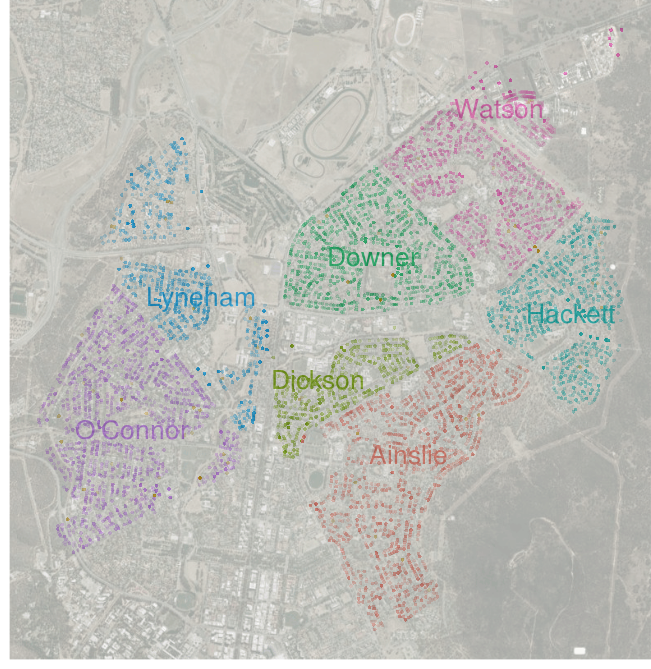Using Google's Static Maps and Geocoding API
The complete code for this post is on GitHub.
R package
rjsonis used to parse the geocoding output.
Geocoding Requests
Using Google’s Geocoding API is very simple. From the documentation requests should be of the following form:
http://maps.googleapis.com/maps/api/geocoding/[output]?[parameters]where output is the output format (either json or xml) and parameters include required and optional values separated by an ampersand (&).
The two required parameters:
-
a location value such as an
address -
a
sensorvalue,trueorfalse, indicating whether or not the geocoding request come from a device with a location sensor
For example, for the address “West 35th, New York”, we could send the following request:
http://maps.googleapis.com/maps/api/geocoding/json?address=west+35th+new+york&sensor=falseSo, wraping the request in an R function, for a list/vector of addresses, we can retrive the geocoding data
GetGoogleMapJSON <- function(address) {
URL <- paste("http://maps.googleapis.com/maps/api/geocode/",
"json?address=", gsub(" ","\\+", address),
"&sensor=false", sep="")
tryCatch(fromJSON(paste(readLines(URL), collapse="")),
error=function(e) e)
}
GoogleMAPJSON <- lapply(addresses, GetGoogleMapJSON)
Note that there is a limit on the API of 2500 request per day, more than that and the results field in the JSON output is empty and the status field contains an "OVER_QUERY_LIMIT" value.
Because of this limit, there is an exception handling step in GetGoogleMapJSON so that in the case of something like a connection error, we don’t lose previous successful requests.
Now that we have a list of geocoding data for each address extracting desired attributes is simple a matter of using sapply/lapply, for example, to extract the latitude and longitude
lat <- sapply(GoogleMapJSON,
function(x) tryCatch(x[[1]][[1]]$geometry$location$lat,
error=function(e) NA))
lng <- sapply(GoogleMapJSON,
function(x) tryCatch(x[[1]][[1]]$geometry$location$lng,
error=function(e) NA))
So we now, consolidating the data into a data frame:
head(dat)
# Address NrBed NrBath PropType Price
# 1 5 Faunce Cr ACT 2602 AUSTRALIA 4 2 House 1130000
# 2 33 Mackennal St ACT 2602 AUSTRALIA 3 1 House 670000
# 3 60 Clianthus St ACT 2602 AUSTRALIA 3 1 House 698000
# 4 40 Raymond St ACT 2602 AUSTRALIA 3 1 House 730000
# 5 22/21 Cossington Smith Cr ACT 2602 AUSTRALIA 3 1 Unit 420000
# 6 36 Negus Cr ACT 2602 AUSTRALIA 4 2 House 770000
# Date status
# 1 2013-06-15 OK
# 2 2013-06-15 OK
# 3 2013-06-15 OK
# 4 2013-06-13 OK
# 5 2013-06-11 OK
# 6 2013-06-08 OK
# addressGoogle suburb
# 1 5 Faunce Crescent, O'Connor ACT 2602, Australia O'Connor
# 2 33 Mackennal Street, Lyneham ACT 2602, Australia Lyneham
# 3 60 Clianthus Street, O'Connor ACT 2602, Australia O'Connor
# 4 40 Raymond Street, Ainslie ACT 2602, Australia Ainslie
# 5 22/21 Cossington Smith Crescent, Lyneham ACT 2602, Australia Lyneham
# 6 36 Negus Crescent, Watson ACT 2602, Australia Watson
# lat lng
# 1 -35.266748 149.116408
# 2 -35.247003 149.122385
# 3 -35.251226 149.115978
# 4 -35.255091 149.154808
# 5 -35.241862 149.125098
# 6 -35.233724 149.161682

R code for this map on GitHub.